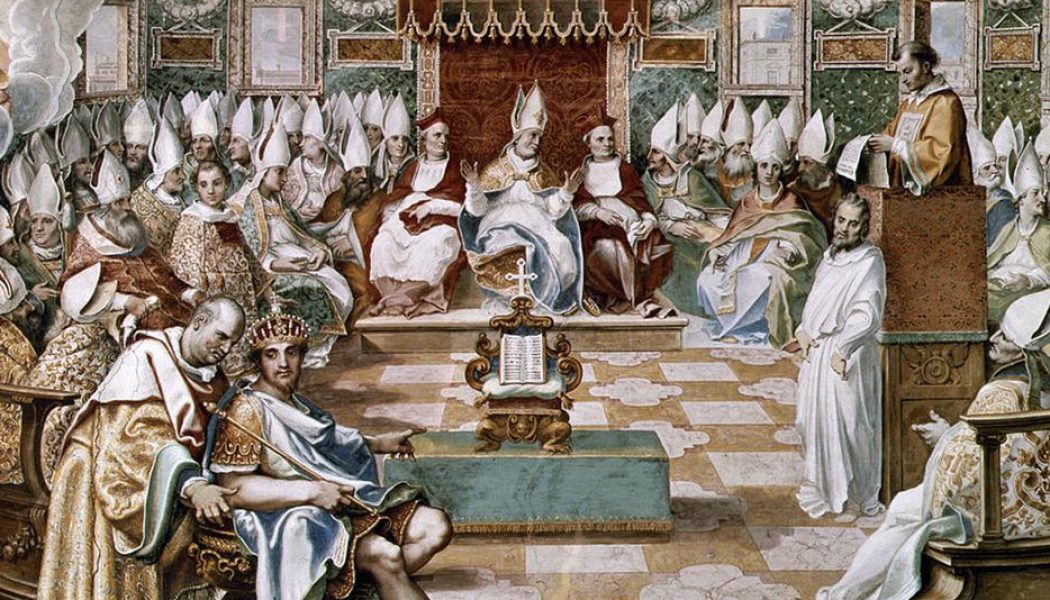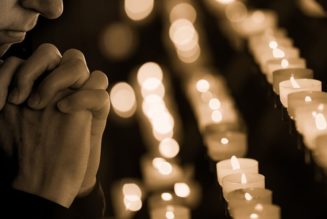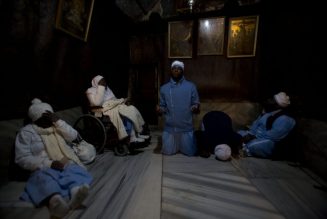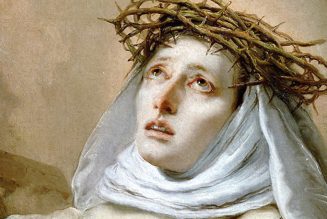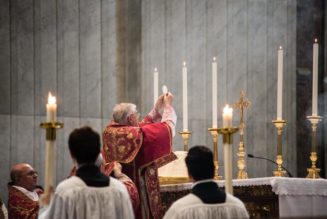
In 2017, Catholic law professor Amy Coney Barrett was being confirmed for the Seventh Circuit Court of Appeals, when Sen. Dianne Feinstein (D-CA) famously told her, “The dogma lives loudly within you.”
What on earth did she mean? Feinstein probably didn’t think about it too much and was just seeking a soundbite for her pro-abortion constituents.
But think about it: What was she talking about? What dogma? The Church’s teaching that abortion is always wrong? The teachings of the Catholic Church? The Christian faith in general? Feinstein may not have known and might be hard pressed to explain what dogma is.
In that, she’s not alone. The word often gets thrown around willy-nilly and can be used simply as a scare word to make something sound ominous.
But it has a precise meaning, and even many Catholics would be surprised to learn how few things count as dogmas.
Not everything the pope says is a dogma. Neither is everything you find in a Church document. Nor are all Church teachings. In fact, not even all infallible Church teachings are dogmas.
Philosophy and Theology
In my book Teaching With Authority (San Diego: Catholic Answers, 2018), I explain the categories into which a statement may fall.
One is philosophy, which seeks to understand the world — including God and moral issues — primarily by natural reason. Another is theology, which seeks to understand God in light of divine revelation.
Both of these are distinct from Church doctrine. There are numerous issues on which Catholic philosophers and theologians are free to hold different opinions.
Some opinions can be quite common. Historically, one common opinion is that animals don’t have an afterlife. Figures like St. Thomas Aquinas have argued a creature needs a rational soul of the kind that humans have to survive death, and this view became common.
However, it’s a philosophical-theological opinion, not a Church teaching. You won’t find Church documents mandating this belief.
Opinion and Doctrine
It’s only when the Church takes a view and puts its teaching authority behind it that it becomes doctrine (Latin, doctrina, “teaching”).
The Church has done this for many views that were initially proposed by theologians, and even some philosophers, but until it does so, a view remains opinion rather than doctrine.
This is important, because bishops and popes don’t stop expressing opinions after they receive episcopal consecration. They’re perfectly capable of giving their personal views on a wide variety of subjects, including religious ones.
If you’re reading a book by or an interview with a churchman — even a pope — that doesn’t mean everything he says is a Church teaching. It may be, if he’s repeating something found in official Church documents, but otherwise it’s likely that he’s giving an opinion.
Even when something is mentioned in a Church document, it doesn’t automatically mean it’s a doctrine.
If a bishop or pope refers to studies on global warming, that doesn’t elevate these studies to the status of doctrine. They deal with matters of science rather than faith. What would be matters of faith are the principles he goes on to articulate about our duty to care for God’s creation.
This show how interwoven matters of doctrine and matters of opinion can be in Church documents, and how careful we need to be when identifying them.
Levels of Authority
When the Church does put its teaching authority (Latin, magisterium) behind a view, it can do so with varying degrees of authority.
The Congregation for the Doctrine of the Faith explained that the level of authority something has “becomes clear from the nature of the documents, the insistence with which a teaching is repeated, and the very way in which it is expressed” (Donum Veritatis 24).
Thus, if a pope teaches through an encyclical rather than through a weekly audience, it has more authority. It also has more authority if he repeats the teaching frequently and uses firm rather than tentative language when expressing it.
It’s possible, in unusual situations, “that a theologian may, according to the case, raise questions regarding the timeliness, the form, or even the contents” of non-infallible teachings (DV 24).
However, because Church is guided by the Holy Spirit even when not speaking infallibly, this is rare. Ordinarily with non-infallible teachings, “the response called for is that of the religious submission of will and intellect” (DV 23).
Infallibility
In exceptional circumstances, the Church may engage its gift of infallibility, which absolutely guarantees that the teaching is true.
This also is rare, and the Code of Canon Law (749) provides that “no doctrine is understood as defined infallibly unless this is manifestly evident.” Not just evident but manifestly so.
Infallibility can be exercised in several ways. One is when a pope issues an ex cathedra statement. Another is when an ecumenical council definitively declares a teaching.
Over the centuries, language has been worked out that popes and councils can use to signal when they are teaching infallibly. This may involve the word define (“we declare and define . . .”), the word anathema (“…let him be anathema”), or the word heretical (“…is condemned as heretical”).
It also is possible for the Church to teach infallibly by what is known as the “ordinary and universal Magisterium.” This happens when the bishops scattered throughout the world, teaching in union with the pope, “are in agreement on one position as definitively to be held” (Lumen Gentium 25).
Even many Catholics misunderstand this point and think that just because a teaching has always been taught, it must be infallible. This is not the case. It does not matter how old or new a teaching is. The key is that the bishops must agree that a position is not just binding but absolutely binding on the faithful. That is often difficult to verify, and not many teachings fall into this category.
Dogma
Finally, we come to dogmas, which are a special type of infallible teaching. For something to be a dogma, the Church must infallibly teach not just that it is true but that it is divinely revealed (i.e., part of the deposit of faith given by God and entrusted by the apostles to the entire Church).
If the Church has not infallibly taught that it is divinely revealed, it may still be an infallible teaching, but it’s not a dogma.
In a 1998 commentary on the Profession of Faith, Joseph Ratzinger cited the reservation of the priesthood to baptized men as a teaching that is infallible but that is not yet a dogma since the Church has not infallibly taught that it is part of revelation. By contrast, the Immaculate Conception and Assumption of Mary are dogmas.
Dogmas require the assent of theological faith, since God has revealed them and the Church has infallibly taught them.
The opposite of a dogma is a heresy, which is the obstinate doubt or denial of a dogma (Canon 751). Unless all of the conditions for a dogma are met, you cannot accuse a person who doubts or denies it of heresy, whatever else he may be guilty of.
The Church is very careful about these distinctions, and public discourse would be served if people were aware of — and honored — them.
